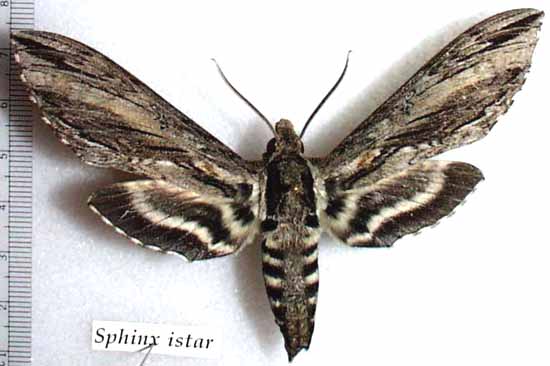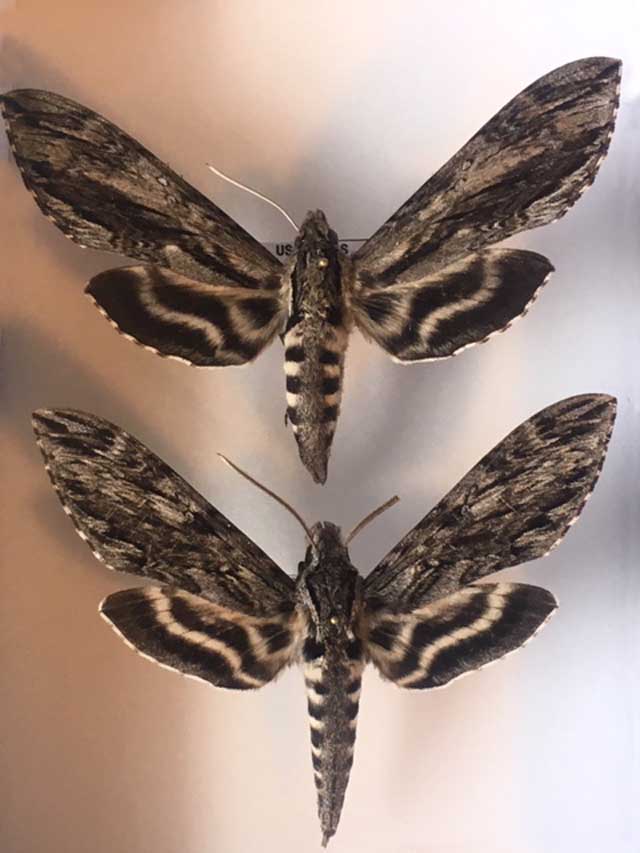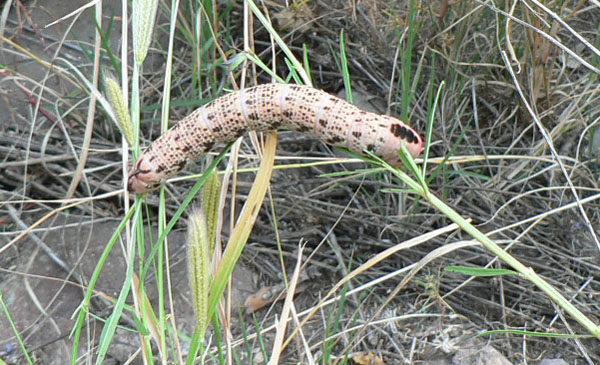SPHINX ISTAR, THE ISTAR SPHINX

Sphinx Istar by Bruce Walsh.
This site has been created by
Bill Oehlke at oehlkew@pei.sympatico.ca
Comments, suggestions and/or additional information are welcomed by Bill.
TAXONOMY:
Family: Sphingidae, Latreille, 1802
Subfamily: Sphinginae, Latreille, 1802
Tribe: Sphingini, Latreille, 1802
Genus: Sphinx (Linnaeus, 1758)
Species: istar, Rothschild& Jordan, 1903........
|
MIDI MUSIC
......It's a Wonderful World......
copyright C. Odenkirk
ON.OFF
<bgsound src="world.mid" LOOP=FOREVER>
|
DISTRIBUTION:
Sphinx istar, the Istar Sphinx (Wing span: 4 - 4 1/2 inches (10.2 - 11.4 cm)),
flies in mountains and pine-oak woodlands from southern Arizona east to South Texas and south to Guatemala. Mexico is the specimen type locality.
The upperside of the forewing is dark gray with brown tinges. A series of narrow dashes runs from the tip to the
cell spots, and a wide black band runs from the middle of the outer margin to the base of the wing. The upperside of the
hindwing is black with two white bands.

Lintneria istar top, Live Oak County, Texas,
Lintneria separatus bottom, Apache County, Arizona,
courtesy of Derek Bridgehouse.
FLIGHT TIMES:
Sphinx istar adults fly from July-September.
ECLOSION:
Little is known about the eclosions of the earth pupators, but many believe
pupae wiggle toward the surface just prior to emergence.
SCENTING AND MATING:
Istar females extend a scent
gland from the posterior of the abdomen to lure in the night flying
males.
EGGS, LARVAE, PUPAE:
Istar Sphinx larvae
feed primarily on mints (Salvia). |

Lintneria (Sphinx) istar or separatus, Ft. Davis,
Texas,
October 1, 2005,
courtesy of Katherine McMahon.
Return to Sphingidae Index
Return to Sphingini Tribe
Use your browser "Back" button to return to the previous page.
This page is brought to you by
Bill Oehlke and the
WLSS. Pages are on space rented from Bizland. If you would like
to become a "Patron of the Sphingidae Site", contact Bill.
Please send sightings/images to Bill. I will do my best to respond to
requests for identification help.
Enjoy one of nature's wonderments: Live
Saturniidae (Giant Silkmoth) cocoons.
 | 
Show appreciation for this site by clicking on flashing butterfly to the left.
The link will take you to a page with links to many insect sites. |




